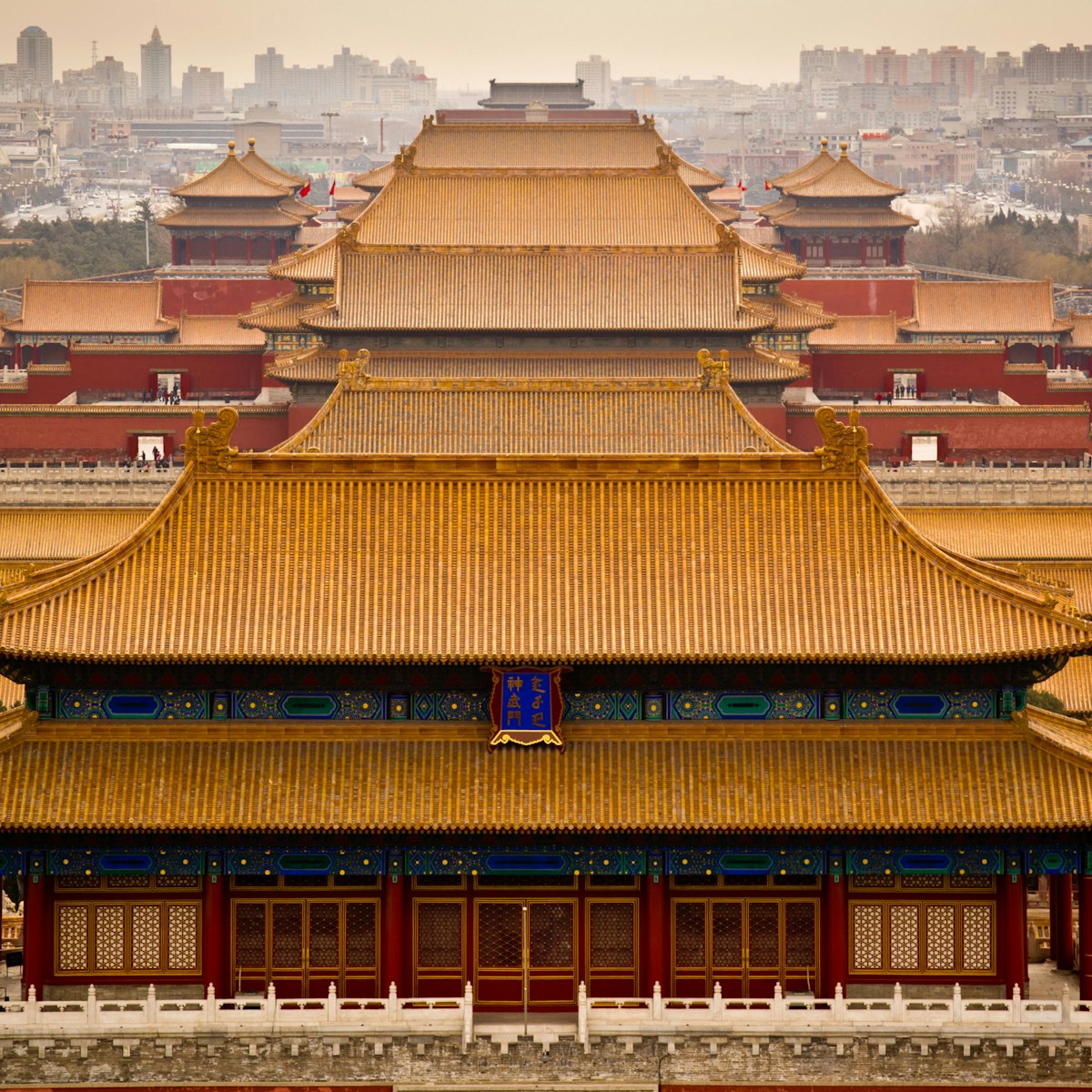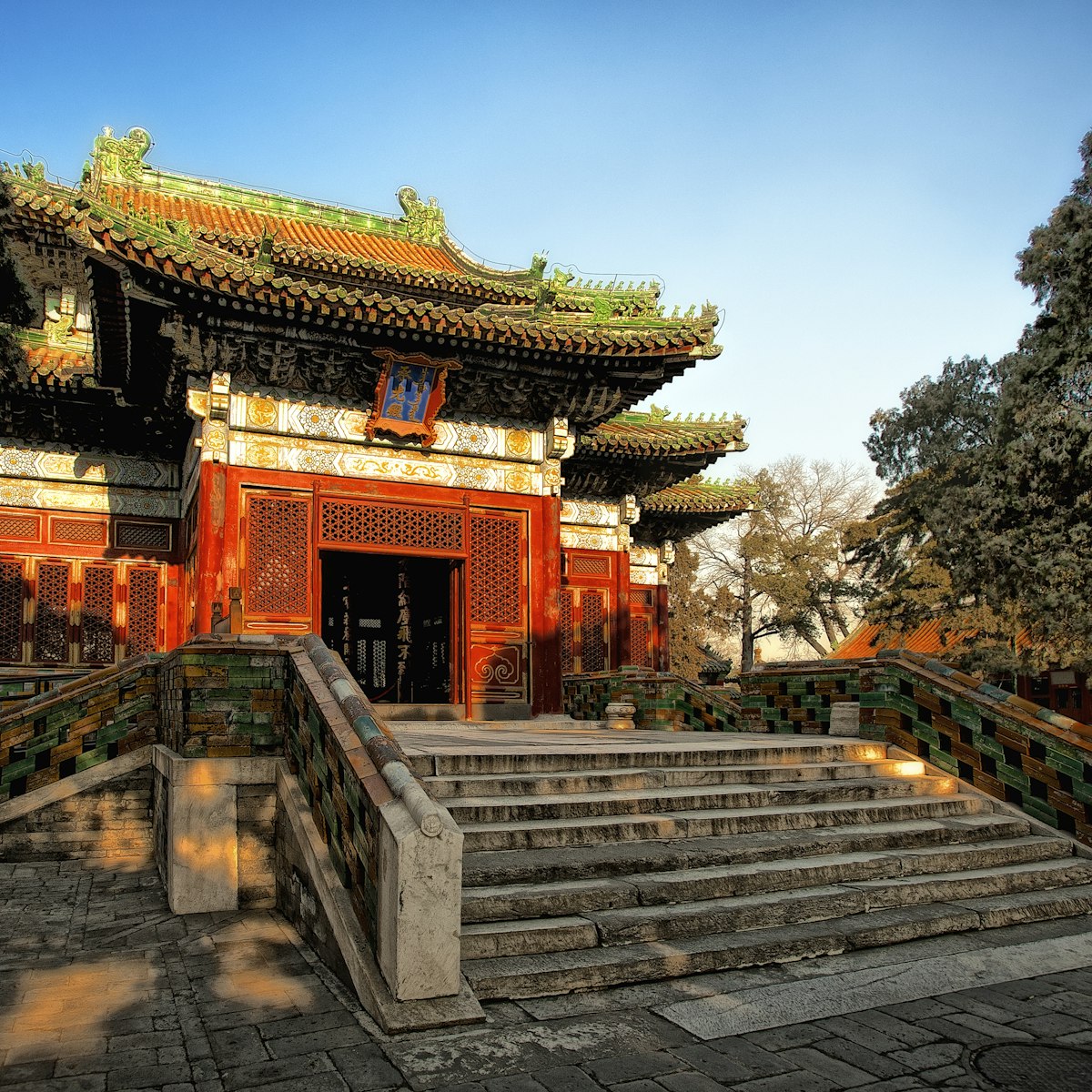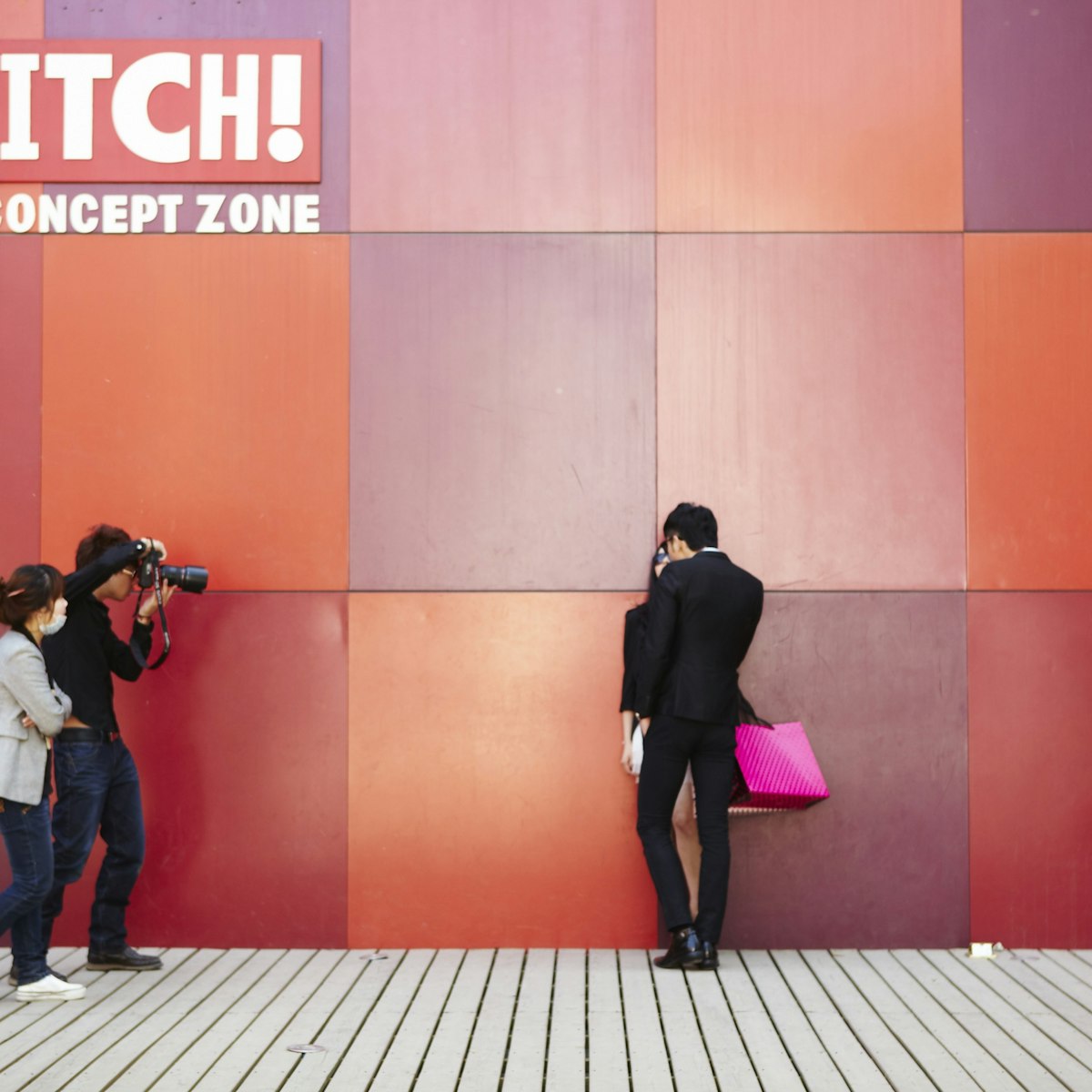The most unique of the Forbidden City's six eastern palaces, the Palace of Prolonging Happiness features an unfinished 20th-century Western-style building with intricately carved white marble facade and cast-iron roof. The palace was built in 1420 and was originally similar in style to the other five palaces before burning down in 1845. Construction of the 'crystal palace' structure standing here today was started in 1909 but was discontinued due to lack of finances.
Palace of Prolonging Happiness
Lonely Planet's must-see attractions

0.1 MILES
Enclosed by 3.5km of citadel walls at the very heart of Beijing, the Unesco-listed Forbidden City is China’s largest and best-preserved collection of…

2.85 MILES
An oasis of methodical Confucian design, the 267-hectare Temple of Heaven Park is unique. It originally served as a vast stage for solemn rites performed…

8.54 MILES
A marvel of Chinese garden design and one of Beijing's must-see attractions, the Summer Palace was the royal retreat for emperors fleeing the suffocating…

1.13 MILES
Flanked by triumphalist Soviet-style buildings, Tian'anmen Sq is an immense void of paved stone (440,000 sq metres, to be precise) at the symbolic centre…

0.76 MILES
Beihai Park, inside the old Imperial City, looks much as it would have done in the 18th century when it served as Emperor Qianlong's private gardens. The…

2.35 MILES
This immense fortress, part of the Ming City Wall Ruins Park, guarded the southeast corner of Beijing's city walls. Originally built in 1439 but repaired…

0.8 MILES
Instantly recognisable by its giant framed portrait of Mao, and guarded by two pairs of Ming dynasty stone lions, the double-eaved Gate of Heavenly Peace …

6.56 MILES
Contemporary art meets communist history at this thrilling enclave of international galleries installed within China's model factory complex of the 1950s…
Nearby attractions
0.03 MILES
Built in 1420, this palace has been the residence of numerous empresses, imperial concubines and consorts. It's one of the six eastern palaces in the…
2. Palace of Great Benevolence
0.03 MILES
One of the six eastern palaces in the Forbidden City, this was a residence of imperial concubines. Emperor Kangxi, most exalted of the Qing emperors (or…
0.05 MILES
One of the six eastern palaces, this dates from 1420, and was used as a residence of imperial concubines. Today it houses a museum displaying a range of…
0.05 MILES
The hall where emperors worshipped their ancestors (under restoration at time of research). Once held the spirit tablets of deceased Qing emperors.
0.07 MILES
The northeasternmost of the six eastern palaces of the Forbidden City, it started out as a residence for concubines, and later became a library.
6. Palace of Accumulated Purity
0.07 MILES
One of the Forbidden City's six eastern palaces, this is notable for being the former residence of the young Xianfeng Emperor, who lived here with his mum.
0.09 MILES
This hall was the principal residence of the emperor in the Ming and early Qing dynasties, where the son of heaven slept and worked. Later in the Qing…
0.09 MILES
The main hall of the Palace of Tranquil Longevity (宁寿宫, Níng Shǒu Gōng) built around 1771 for Qing emperor Qianlong's retirement, though he never moved in…